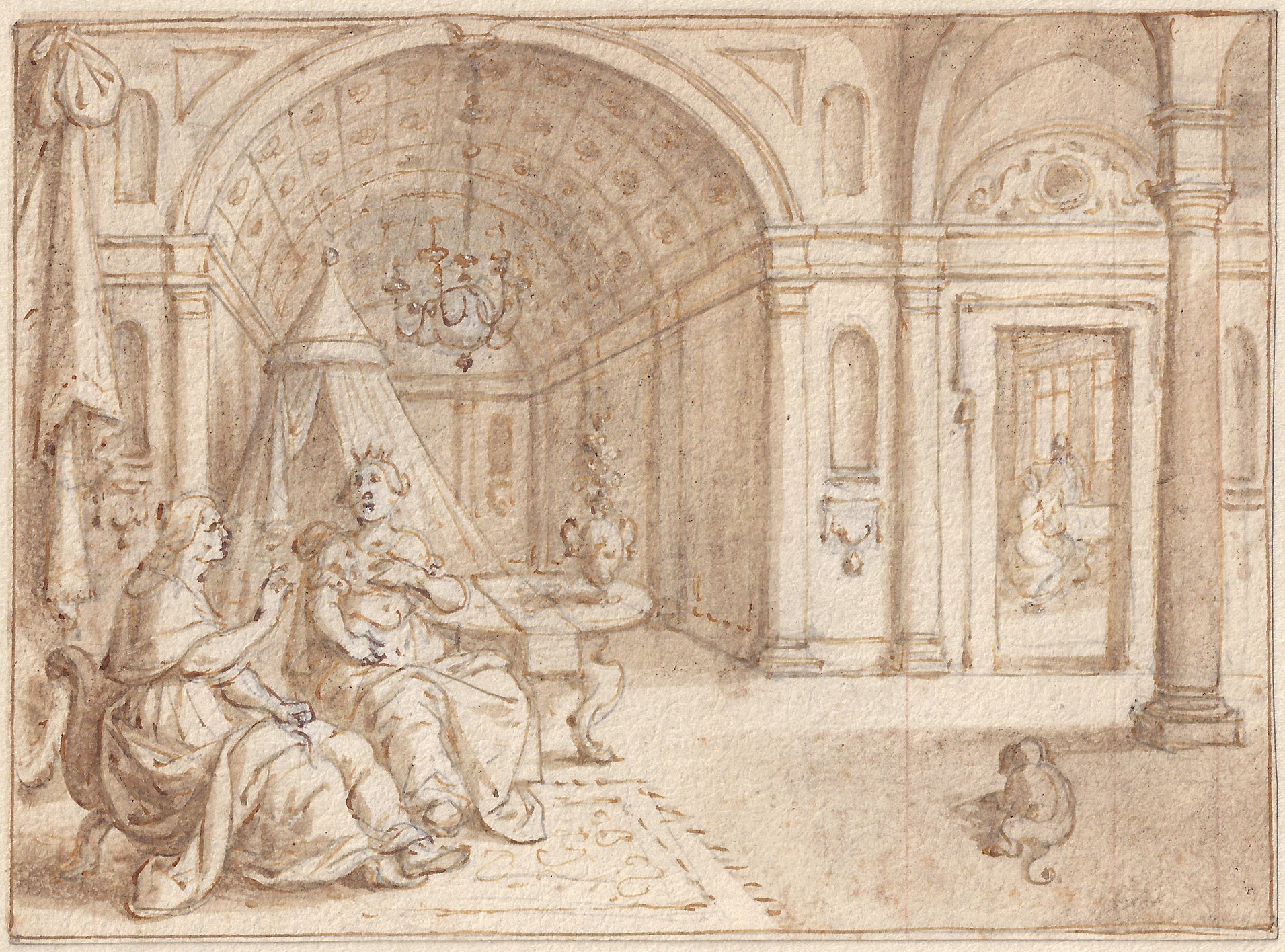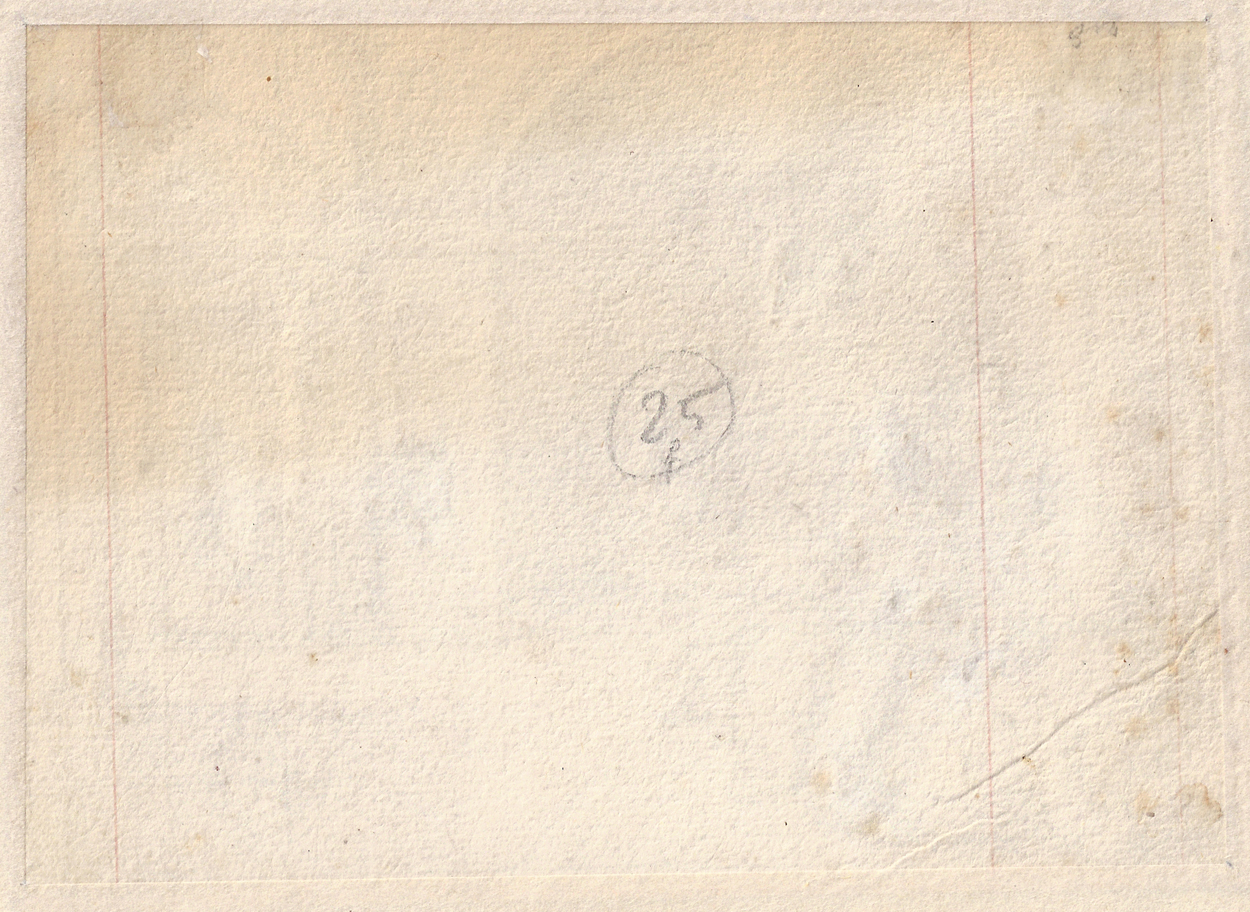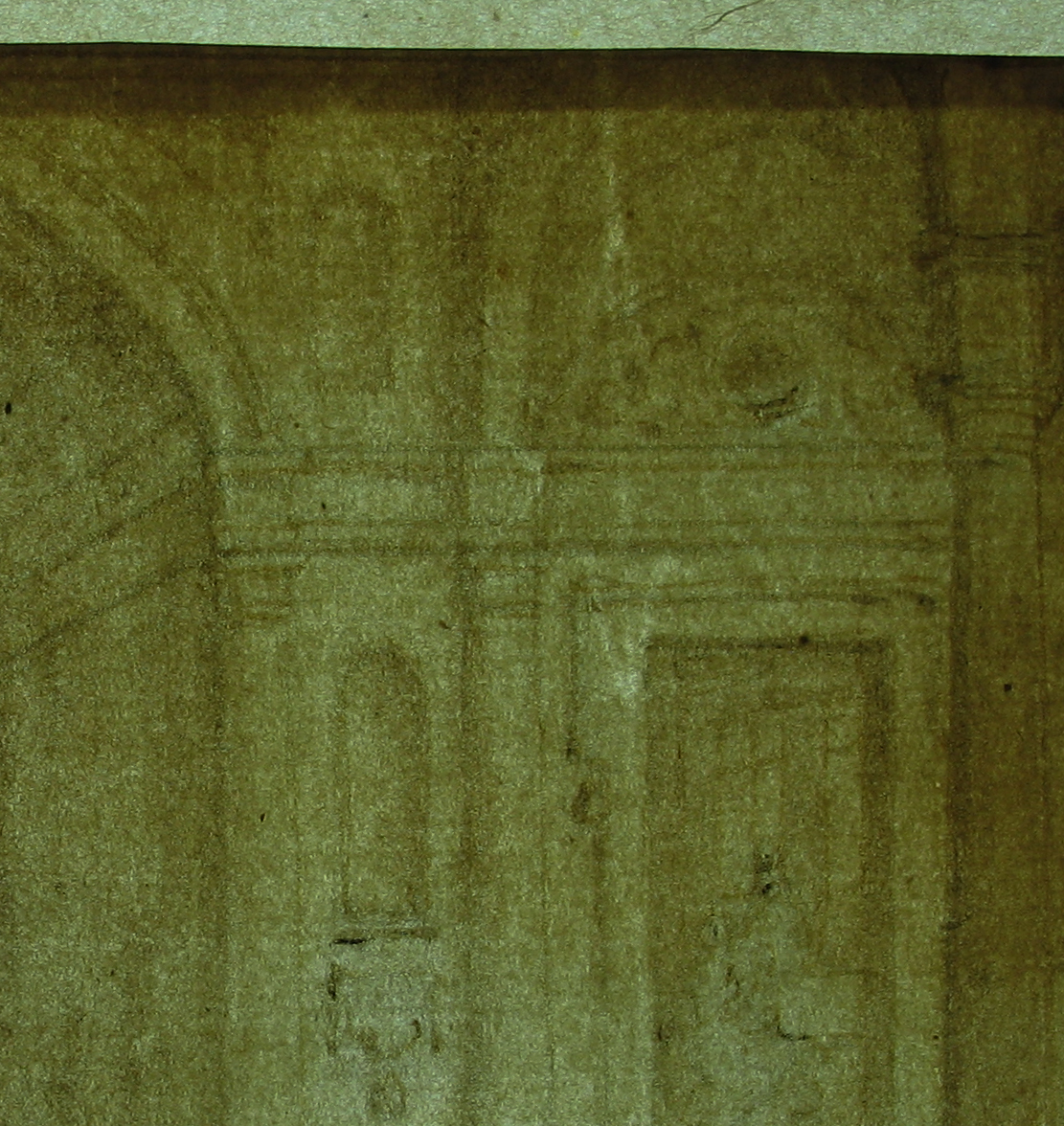SEBASTIAEN VRANCX (Antwerp 1573 – 1647 Antwerp)
Sebastiaen Vrancx (Antwerp 1573 – 1647 Antwerp)
A Scene from the Aeneid: Anna and Dido (Book IV)
Black chalk, pen and brown ink, brown wash, white heightening, traces of squaring in red chalk, brown ink framing lines, watermark star, 121 x 160 mm (4.8 x 6.3 inch)
Provenance
~ Probably part of the collection of 59 drawings from the Aeneid series sold at Nouveau Drouot, Paris, 9 October 1981 (‘Collection de Monsieur X’)
~ Private collection, Amsterdam, 1990
Literature
L. Wood Ruby, ‘Sebastiaen Vrancx as illustrator of Virgil’s Aeneid’, Master Drawings, XXVIII (1990), p. 70
***
The present drawing is one of a series of at least sixty-five drawings illustrating Virgil’s epic the Aeneid, which were first attributed to Vrancx by Ruth Muthmann and Andrew Robison in 1983, and are fully discussed by Louisa Wood Ruby in 1990.1 In some of the surviving drawings from the series, the image occupies the upper half of the sheet, while below there are some lines of text the scenes illustrate. A cluster of drawings which remained together until 1981 lacked the texts, and it is likely that the present sheet was part of that group. Dr Wood Ruby dates the series c. 1615, and points out not only that they constitute the most extensive series of Aeneid illustrations since Sebastian Brandt’s series of 1502, but also that the rhymed Dutch paraphrasing of Virgil’s text which appears below some of the images does not correspond with any published translation of the original, and may indeed represent Vrancx’s own attempt at a new translation. Vrancx’s lively interest in classical literature is not only evidenced by the existence of the Aeneid series, but also by his membership of ‘Die Violieren’, one of the Chambers of Rhetoric in Antwerp.
Dr Wood Ruby further pointed out that the series was probably intended to be engraved, as most figures in the drawings are left-handed (which would have been reversed to right-handed in printed form). Although nothing is known of the early provenance of the series, the drawings appear to have been known to Rubens, who was influenced by the composition of some of the sheets. As Rubens owned at least two paintings by Vrancx, the possibility that he owned the Aeneid series cannot be excluded.
The Aeneid was written by Virgil between 29 and 19 BC, and tells the legendary story of Aeneas, a Trojan who travelled to Italy, where he became the ancestor of the Romans. The first six of the poem's twelve books tell the story of Aeneas's wanderings from Troy to Italy, and the poem's second half tells of the Trojans' ultimately victorious war upon the Latins, under whose name Aeneas and his Trojan followers are destined to be subsumed.
The present sheet illustrates a scene from book IV, lines 416 ff., in which Queen Dido of Carthage, who had fallen in love with Aneas, is discussing her love with her sister Anna, upon the departure of Aeneas from Carthage. The Royal palace has been modelled according to contemporary Flemish Renaissance architecture by Vrancx.
Other drawings from the series are in the collections of the Fogg Art Museum (Cambridge, Mass.), Yale University Art Gallery (New Haven), the Pierpont Morgan Museum (New York) and the Metropolitan Museum (New York).
Vrancx is best known for his depictions of battle scenes and was probably the first artist in the northern or southern Netherlands to attempt this subject-matter. He was the son of Jan Vrancx and Barbara Coutereau. Van Mander’s claim that he trained as a painter with Adam van Noort seems possible but is unconfirmed. Vrancx’s earliest known work, a drawing, is closely related to the Antwerp scrollwork decorations of Cornelis Floris and Cornelis Bos. The next drawings and paintings were executed during Vrancx’s stay in Italy (c. 1596–1601) and show strong parallels with the early style of Paul Bril, who was working in Rome, and of Jan Breughel I.
SOLD
1. L. Wood Ruby, ‘Sebastiaen Vrancx as illustrator of Virgil’s Aeneid’, Master Drawings, XXVIII (1990), pp. 54-73.




